BENCH PRESS GROUND ZERO (Above Photo): Marvin Eder circa 1955. He was the "Bench Press Grand Maestro." He is shown bench pressing 435 for 5 reps after two men handed him the barbell. The bench with upright supports had yet to be invented. Eder weighed 195 pounds at the time.
History
The modern bench press did not gain traction in the world of progressive resistance training until the 1960s. Up until then, the bench press was a minor exercise that needed specialized equipment, i.e. an exercise bench and a way to receive a barbell at arm’s length. If you wanted to bench press, you needed a couple of guys to hand you the barbell – at arm’s length, always an awkward and uneven proposition.
The bench press was not the strength standard for upper body strength that it has become. Modern progressive resistance training formalized itself in the 1920s and until the 1960s the test of upper body strength was the clean and overhead press. Lifting a weight overhead was the strength benchmark. Men practiced the clean and press, snatch, clean and jerk, the bent press and all the one-armed overhead lifts.
Early progressive resistance training was done with a barbell sitting on the floor. That was it. There were no benches that inclined, no machines of any kind, no pulley or cable machines, no squat racks, no nothing other than a barbell sitting on the floor. A fancy gym might have dumbbells and a sturdy homemade wooden bench. Physiques reflected this singular use of overhead lifting. The elite overhead lifters were leaner and quite athletic.
The first assistance exercise that gained widespread traction was the squat. There was no way to back squat heavy without racks of some type or kind. The squat battles of the late 1950s and early 1960s between American Paul Anderson and Canadian Doug Hepburn captured the imagination of strength athletes and bodybuilders worldwide. Doug Hepburn was also a mighty bench presser, pushing 550-pounds up using a collar-to-collar grip.
When bodybuilders and strength athletes first saw Marvin Eder and Reg Park, they were blown away by these two men’s chest, arm and shoulder development. When quizzed, both gave all the credit to concentrating on this radical new exercise: the heavy flat bench press. Both Reg and Marvin both eventually bench pressed 500 pounds, Reg weighing 240 and Marvin weighing 195.
These early pioneers discovered that if they concentrated on the “short” movements: the squat, bench press and deadlift, strength sky-rocketed and dramatic muscle size increases automatically followed. The early pioneers also discovered that the muscle growth cycle had three parts: First and foremost, shatter the muscle in a super-intense training session; Feed the muscle with targeted nutrition; Lastly, rest the muscle until it has had time to heal, recover and grow.
An overhead lift preceded by a power clean is, necessarily complex. Due to the distance travelled, from floor to arm’s length, payloads are lighter. In the short power movements massive payloads are moved short distances to create the deepest possible muscular inroad.
Several factors lead to decline in popularity of the overhead press and the rise in popularity of its upper-body successor and inheritor, the bench press.
- Ease and comfort: compared to an overhead press, a barbell or dumbbell bench press is far more comfortable and enjoyable. If results are the same, comfort always wins out.
- No clean: in ancient times, a man had to pull the barbell or dumbbells from the floor to the shoulders prior to pressing. The clean done right is complex and difficult.
- Development of preferred muscles: the bench press builds upper and lower pecs, front delts and the triceps. Far heavier poundage creates a far deeper muscular inroad.
- Less technique: an overhead press is complex. There is no back brace or support; every press rep is slightly different. The bench press is stable and solid and eliminates sway.
- Better results: for big pecs, delts and triceps, nothing tops bench presses. Dumbbell benching and incline benching, using differing angles dramatically expands possibilities.
- Equipment advances: the bench press has become the most popular progressive resistance exercise. The variety of bench types and kinds is mind-boggling.
- The birth of powerlifting: in 1965 powerlifting was formally launched with the bench press as one of the three contested lifts. This made bench records official.
The modern bench press era took root in the 1960s with the invention and widespread use of the exercise bench with twin upright supports. This simple invention allowed benchers to bench unassisted. No longer did the weight have to be handed to them. Benchers could bench without assistance, whenever they wanted.
Another critical aspect of the bench press revolution: Olympic weightlifting began to nosedive in popularity in the 1970s, this fall in popularity was in direct proportion to the rise in popularity of bodybuilding and powerlifting. The final nail in the coffin of Olympic lifting was the banning of the press in 1972. In 1960 the clean and overhead press was the most practiced progressive resistance exercise; in 2020 the clean and press is as extinct as the Dodo bird.
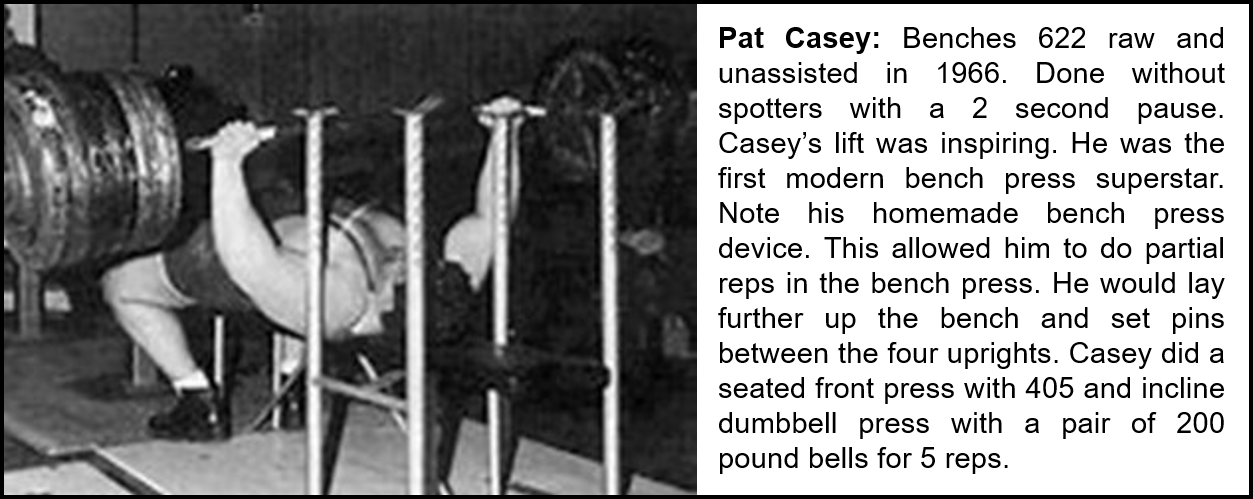
The rise of the muscle magazines in the 1960s cemented the bench press (along with the curl) as the quintessential bodybuilding exercise. The muscle mags featured the training routines of the champions of the day. Every bodybuilder bench pressed. The world record holding bench pressers in powerlifting were massive and muscular. Trainees wanted the chest, delt and tricep development routinely attained by elite bodybuilders and powerlifters.
The Arnold era cemented the celebrity status of the bench press. Just as Arnold became Numero Uno, so too did the bench press. His pecs and arms hatched a million acolyte bodybuilders. His side chest pose was incredible: slabs of pec meat sat atop an expanded ribcage, attained by alternating light pullovers with heavy squats.
Arnold would perform 100 sets per week dedicated strictly to the chest exercises: flat bench, flat bench with dumbbells, incline barbell and incline dumbbell pressing – plus all the “hugging” exercises: dumbbell flyes, cable crossovers. He generally performed five sets of 6-10 reps per exercise and blasted his chest three times a week.
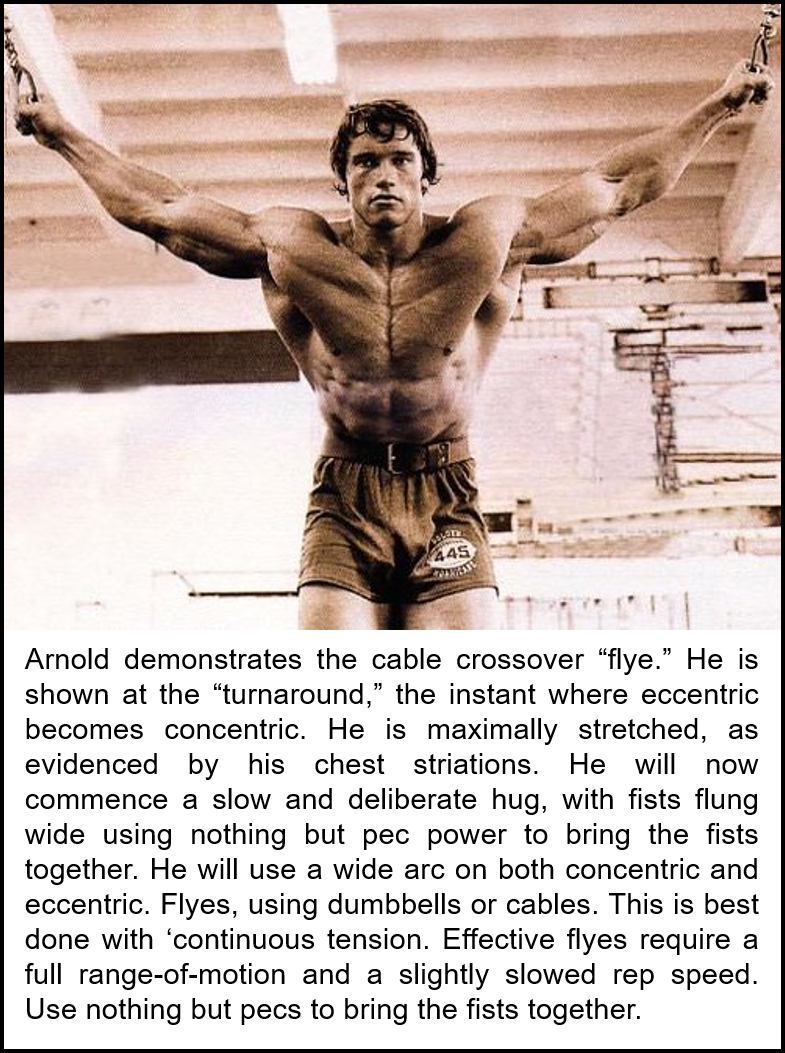
Early Superstars
Marvin Eder: the first man in history weighing less than 200 to bench press 500. Eder was also the world’s best overhead presser. Weighing 195 pounds he clean and pressed 345 when the world record was 336. Despite being barely 5-6, he used a near collar-to-collar bench grip on an Olympic bar. Marvin, like Pat Casey, loved heavy weighted dips. His overhead pressing and incredible dip power upped his bench press prowess. His pecs were measured at 4 inches thick.
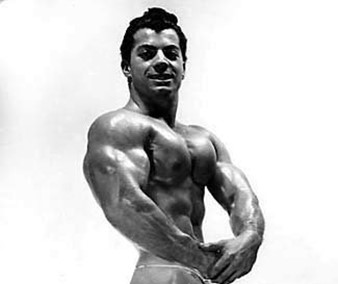
Doug Hepburn: The 1952 Olympic weightlifting champion, Hepburn was the first man in history to bench press 500 pounds. Doug was the first man to squat 700 pounds. He was athletic, able to walk on his hands weighing 300 pounds. Doug was afflicted with polio and had a club foot. He overcame handicaps to single-handedly win the Olympic gold medal with zero state or national support. Doug was a favorite base man for elite hand balancers at Muscle Beach in the 1950s.

Pat Casey: Pat was the first man in history to bench press 600. His 623 pound world record bench press was done with a 2-second pause on the chest, as was the rule at the time. Casey was famous for training all day long at Bill Pearl’s gym on Manchester. He would routinely perform repetition dips with 300 pounds strapped to his 330 pound body. He could do repetition incline presses with a pair of 200 pound dumbbells and could seated front presses with 405 for reps.
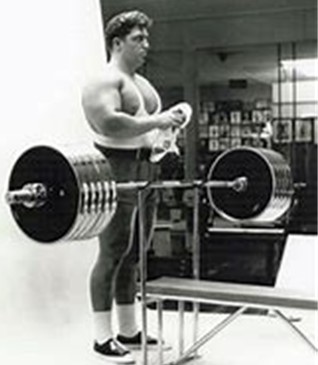
Jim Williams: Big Jim Williams was the greatest bench presser in history. When he arrived on the powerlifting scene the bench press was 625, within three years he had done 700. No man in history ever pushed a world record up further, faster. Williams was a volume bencher, benching heavy as many as four times a week. asked the rationale, he responded, “I like to bench.” A man with a lengthy prison record, Williams stood 6-4, weighed close to 400 and moved like a cat.
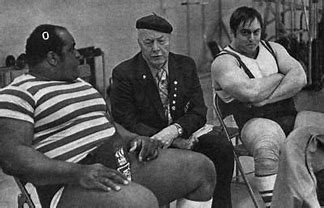
Hollywood Henderson: No one in history has raw bench pressed 700 pounds more times then James Henderson. In the photo I stand 5-10 and weigh 235. Henderson stands 6-4 and weighs 400. At last count Henderson had posted 18 competition bench presses of 700. He best official effort was 712. He would routinely not warm-up (at the national championships) and opened with 661. A strong case can be made that he is the greatest bench presser in history.

These are but a few of the lifters that have inspired me with their strength feats in the bench press. Hopefully these examples will serve as inspiration to our readers as well. For more information on mentors and bench strategies check out the links below.
Learn more about our training philosophy check out our Progressive Resistance Resource Page. Join the community sign up below to our newsletter and receive our FREE Planning and Periodization Guide.
Want the inside training scoop?
Join The Community
Our email content is full of value, void of hype, never pushy, and always free. As a BONUS you will receive our FREE planning & periodization template to help you with your training goals.

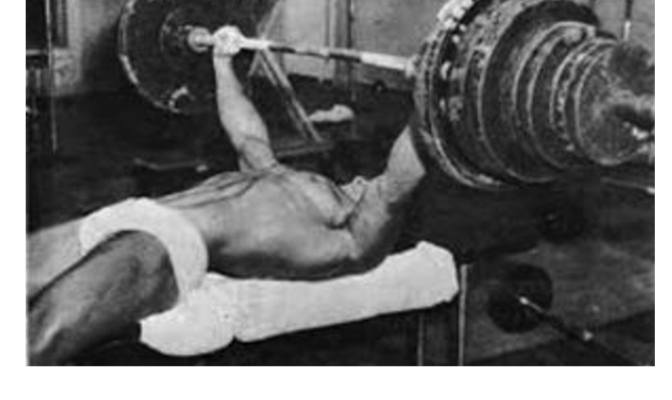



I love your articles Marty. Always full of great stories and valuable training insights. Thank you for posting this. I used to talk to Doug Hepburn all the time as I had family in Vancouver near Doug’s shop. Still incredible strong into his old age.
Thanks for leaving a comment! It is great to hear back from fans. It is important to pass along stories of these legends.